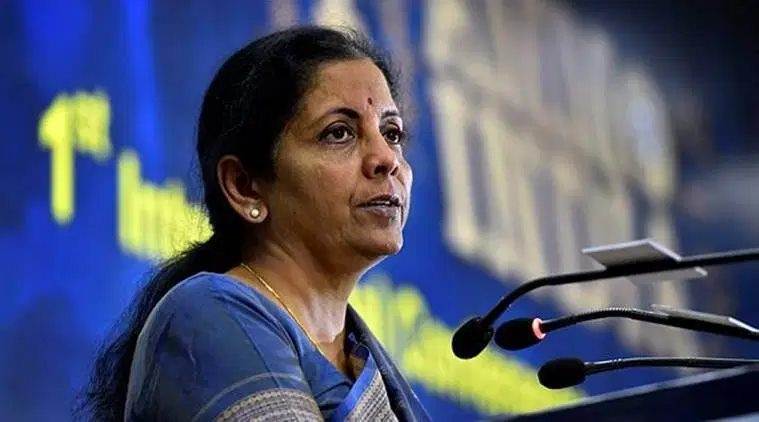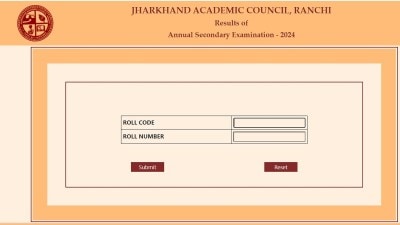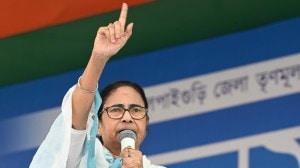- India
- International
What is the problem that monetisation is trying to solve?
If government crosses Rubicon, markets will fear that constraints on fiscal policy are being abandoned.
 Union Finance Minister Nirmala Sitharaman addresses the press in New Delhi. (File Photo)
Union Finance Minister Nirmala Sitharaman addresses the press in New Delhi. (File Photo)
In her interview to this newspaper last week, the finance minister said that she is keeping her options open on monetisation of the deficit by the Reserve Bank of India (RBI). How the government and the RBI decide on this will have significant implications for India’s economic prospects in the short-term, and indeed in the long-term.
First off, two clarifications. Monetisation of the deficit does not mean the government is getting free money from the RBI. If one works through the combined balance sheet of the government and the RBI, it will turn out that the government does not get a free lunch, but it does get a heavily subsidised lunch. That subsidy is forced out of the banks. And, as in the case of all invisible subsidies, they don’t even know.
Second, it is not as if the RBI is not monetising the deficit now; it is doing so, but indirectly by buying government bonds in the secondary market through what are called open market operations (OMOs). Note that both monetisation and OMOs involve printing of money by the RBI. But there are important differences between the two options that make shifting over to monetisation a non-trivial decision.
To understand the issue, some historical context will help. In the pre-reform era, the RBI used to directly monetise the government’s deficit almost automatically. That practice ended in 1997 with a landmark agreement between the government and the RBI. It was agreed that henceforth, the RBI would operate only in the secondary market through the OMO route. The implied understanding also was that the RBI would use the OMO route not so much to support government borrowing but as a liquidity instrument to manage the balance between the policy objectives of supporting growth, checking inflation and preserving financial stability.
Editorial | Informed policymaking requires continuous data generation — COVID crisis is compounding the challenge

In hindsight, the outcomes of that agreement were historic. Since the government started borrowing in the open market, interest rates went up which incentivised saving and thereby spurred investment and growth. Also, the interest rate that the government commanded in the open market acted as a critical market signal of fiscal sustainability. Importantly, the agreement shifted control over money supply, and hence over inflation, from the government’s fiscal policy to the RBI’s monetary policy. The India growth story that unfolded in the years before the global financial crisis in 2008 when the economy clocked growth rates in the range of 9 per cent was at least in part a consequence of the high savings rate and low inflation which in turn were a consequence of this agreement.
The Fiscal Responsibility and Budget Management Act as amended in 2017 contains an escape clause which permits monetisation of the deficit under special circumstances. What is the case for invoking this escape clause now even if it means potentially jeopardising the hard won gains of the government-RBI agreement?
The case is made on the grounds that there just aren’t enough savings in the economy to finance government borrowing of such a large size. Bond yields would spike so high that financial stability will be threatened. The RBI must therefore step in and finance the government directly to prevent this from happening.
But there is no reason to believe that we are anywhere close to that situation. Through its OMOs, the RBI has injected such an extraordinary amount of systemic liquidity that bond yields are still relatively soft. In fact the yield on the benchmark 10 year bond which was ruling at 8 per cent in September last year has since dropped to just around 6 per cent. Even on the day the government announced its additional borrowing to the extent of 2.1 per cent of GDP, the yield settled at 6.17 per cent. That should, if anything, be evidence that the market feels quite comfortable about financing the enhanced government borrowing.
Opinion | India’s Covid trajectory should be measured against that of its neighbours
Both monetisation and OMOs involve expansion of money supply which can potentially stoke inflation. If so, why should we be so wary of monetisation? Because although they are both potentially inflationary, the inflation risk they carry is different. OMOs are a monetary policy tool with the RBI in the driver’s seat, deciding on how much liquidity to inject and when. In contrast, monetisation is, and is seen, as a way of financing the fiscal deficit with the quantum and timing of money supply determined by the government’s borrowing rather than the RBI’s monetary policy. If RBI is seen as losing control over monetary policy, it will raise concerns about inflation. That can be a more serious problem than it seems.
India is inflation prone. Note that after the global financial crisis when inflation “died” everywhere, we were hit with a high and stubborn bout of inflation. In hindsight, it is clear that the RBI, on my watch, failed to tighten policy in good time. Since then we have embraced a monetary policy framework and the RBI has earned credibility for delivering on inflation within the target. Forsaking that credibility can be costly.
If, in spite of all this, the government decides to cross the Rubicon, markets will fear that the constraints on fiscal policy are being abandoned and that the government is planning to solve its fiscal problems by inflating away its debt. If that occurs, yields on government bonds will shoot up, the opposite of what is sought to be achieved.
Finally, the biggest question is this: What is the problem that monetisation is trying to solve? There are cases when monetisation — despite its costs — is inevitable. If the government cannot finance its deficit at reasonable rates, then it really doesn’t have much choice. But right now, it is able to borrow at around the same rate as inflation, implying a real rate (at current inflation) of 0 per cent. If in fact bond yields shoot up in real terms, there might be a case for monetisation, strictly as a one-time measure. We are not there yet.
This article first appeared in the print edition on May 28, 2020 under the title ‘The monetisation question’. The writer is a former governor of the Reserve Bank of India.
EXPRESS OPINION
More Explained
Apr 19: Latest News
- 01
- 02
- 03
- 04
- 05









































